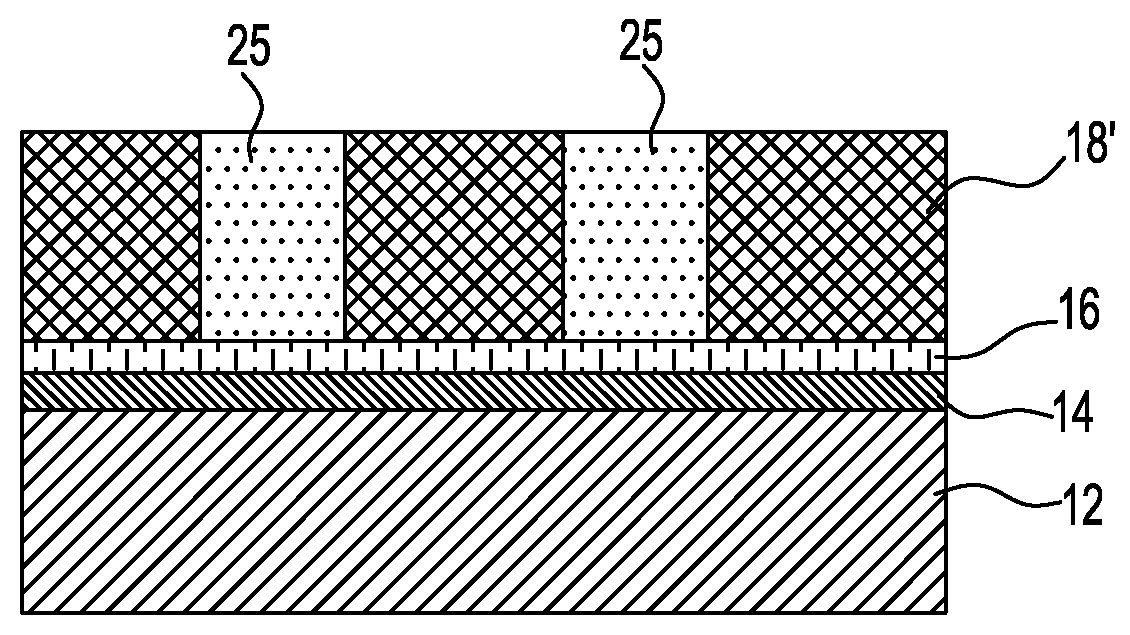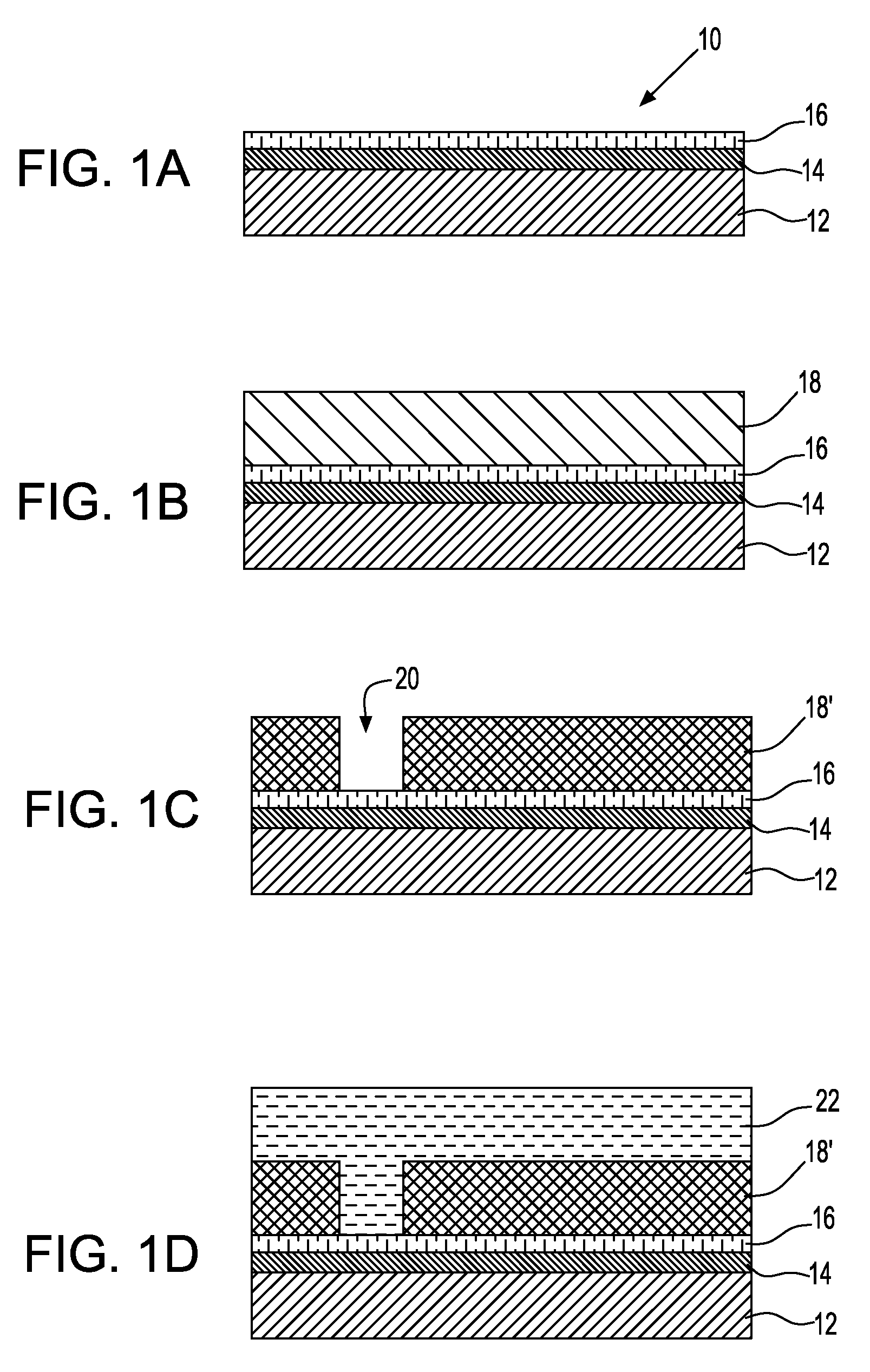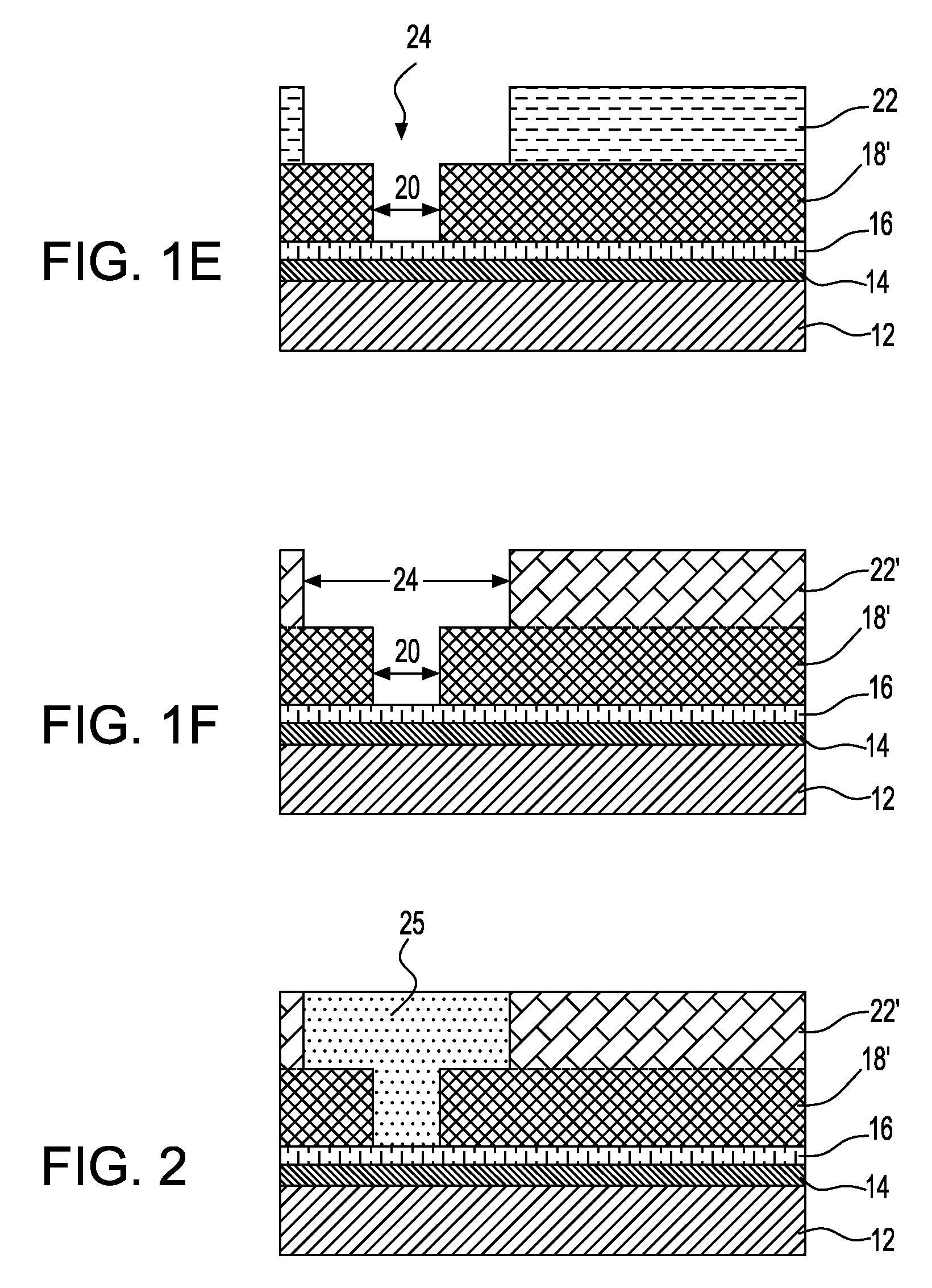Interconnect structures with patternable low-k dielectrics and method of fabricating same
a technology of low-k dielectrics and interconnect structures, which is applied in the direction of electrical equipment, semiconductor devices, semiconductor/solid-state device details, etc., can solve the problems of difficult implementation of low-k materials such as silicon oxide, and the fundamental weaker electrical and mechanical properties of low-k dielectrics compared to silicon oxide, so as to reduce the complexity of the fabrication of current interconnect structures, reduce the number of layers, and reduce the time and cost of fabrication
- Summary
- Abstract
- Description
- Claims
- Application Information
AI Technical Summary
Benefits of technology
Problems solved by technology
Method used
Image
Examples
example 1
Single-Damascene Integration of Negative-Tone Patternable Low-k Dielectric Having a Dielectric Constant of 2.7 as an on-Chip Electrical Insulator
A. Material, Composition
[0128]A patternable low-k composition was formulated with 60 g of a 20 wt % solution of 6:4 poly(p-hydroxy-alpha-methylbenzylsilsesquioxane-co-p-alpha-methylbenzylsilsesquioxane) (pHMBS / MBS) in propylene glycol monomethyl ether acetate (PGMEA), 40 g of a 20 wt % solution of the silsesquioxane copolymer LKD-2021, 2 g of a 20 wt % solution of triphenylsulfonium nonaflate in PGMEA, and 2 g of a 0.5 wt % solution of an organic base such as trioctylamine in PGMEA. The resulting patternable low-k formulation was filtered through a 0.2 micron (μm) filter.
B. CVD ARC Process
[0129]A 800 Å silicon carbide (SiC) film was deposited on 350 Å NBLOK substrate a 200 mm wafer as an anti-reflective coating. The tool used was a 200 mm CVD tool (Centura) from Applied Materials Inc. The process conditions were as follows: precursor trimet...
example 2
Dual-Damascene Integration of Negative-Tone Patternable Low-k Dielectric Having a Dielectric Constant of 2.7 as an on-Chip Electrical Insulator
A. Material, Composition
[0140]A patternable low-k composition was formulated with 60 g of a 20 wt % solution of 6:4 poly(p-hydroxy-alpha-methylbenzylsilsesquioxane-co-p-alpha-methylbenzylsilscsquioxane) (pHMBS / MBS) in propylene glycol monomethyl ether acetate (PGMEA), 40 g of a 20 wt % solution of the silsesquioxane copolymer LKD-2021, 2 g of a 20 wt % solution of triphenylsulfonium nonaflate in PGMEA, and 2 g of a 0.5 wt % solution of an organic base such as trioctylamine in PGMEA. The resulting patternable low-k formulation was filtered through a 0.2 micron (μm) filter.
B. CVD ARC Process
[0141]A 800 Å silicon carbide (SiC) film was deposited on 350 Å NBLOK substrate a 200 mm wafer as a anti-reflective coating. The tool used was 200 mm CVD tool (Centura) from Applied Materials Inc. The process conditions are: precursor trimethyl silane (TMS) ...
PUM
| Property | Measurement | Unit |
|---|---|---|
| dielectric constant | aaaaa | aaaaa |
| thickness | aaaaa | aaaaa |
| thickness | aaaaa | aaaaa |
Abstract
Description
Claims
Application Information
 Login to View More
Login to View More - R&D
- Intellectual Property
- Life Sciences
- Materials
- Tech Scout
- Unparalleled Data Quality
- Higher Quality Content
- 60% Fewer Hallucinations
Browse by: Latest US Patents, China's latest patents, Technical Efficacy Thesaurus, Application Domain, Technology Topic, Popular Technical Reports.
© 2025 PatSnap. All rights reserved.Legal|Privacy policy|Modern Slavery Act Transparency Statement|Sitemap|About US| Contact US: help@patsnap.com



